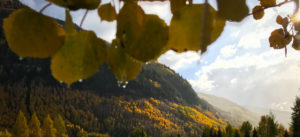Did you know trees sweat?
Well, they don’t sweat in the sense that we sweat but trees lose moisture through pores in their needles and leaves. Now, unless you are tree nerds as we at Old Growth are, this might not interest you. But it should! If we have another winter like last year moisture loss could lead to decreased health of your trees come spring. Fast forward to summer and it could mean infestation of bugs of some type or another. Leave that untreated and the tree could eventually lose needles on entire branches or even die completely.
Ready to learn a little bit about this tree “sweat”?
As I was saying, trees have pores in their needles and leaves. In summer the trees transpire through these pores. The water and nutrients are replaced by moisture from the ground and are taken into the tree through the roots. Similar to when we go for a run or a bike ride, we sweat and we have to replenish our body with water and nutrients during and after activity. In the summer and at times when the ground is not frozen this is a fluid system. Deciduous trees lose their leaves in the fall and are less prone to this winter injury during their dormant season. However, conifers retain their needles and can be impacted by winter inju ry. Conifers will continue to release water from their needles at a greater rate than deciduous trees during the winter months. Trees that are most prone to this winter injury are wind exposed, south facing trees with minimal snow cover or water available to the root system. On warm sunny days when photosynthesis is at its greatest, trees will transpire, if the ground is still frozen or there is poor soil moisture, the tree will not be replacing the water lost through the needles. This is winter injury and the signs of it might not be seen until late summer and into the following fall season.
Now, what can be done to protect your trees?

There are a couple of things. A good snow pack would be the best and most fun option for all of us winter enthusiasts. With the continued pattern of lousy winters I don’t want to hold my breath on that one. So, good soil moisture going into winter will help prevent winter injury. The past two weeks of moisture have been amazing for setting up our trees for a good winter. However, if we start drying out, as is typical, watering via a soil injection could help when Mother Nature doesn’t. Another really good option is to spray trees with a waxy film that will act like chapstick for the needles. This waxy film will help prevent the transpiration through the needles and help the tree retain moisture during the winter. We call this treatment moisture guard, because it guards the trees from excessive moisture loss.
Give us a call if your trees need some winter protection

